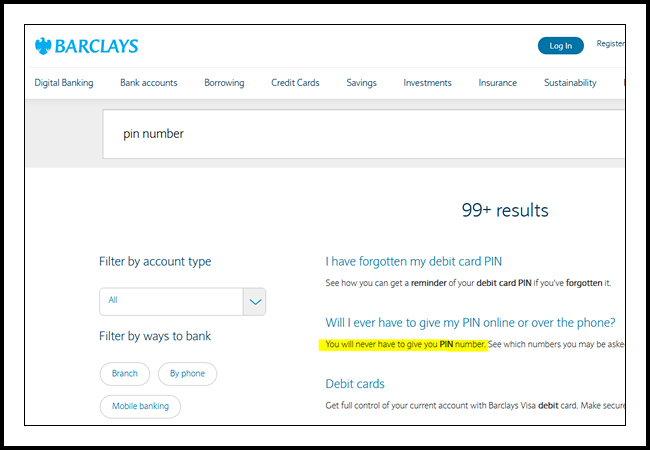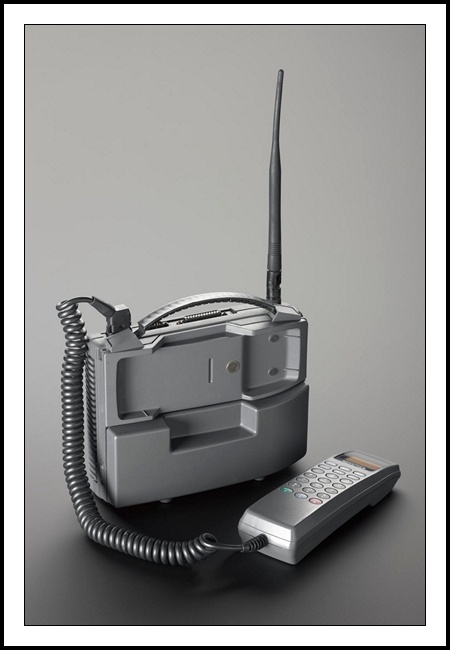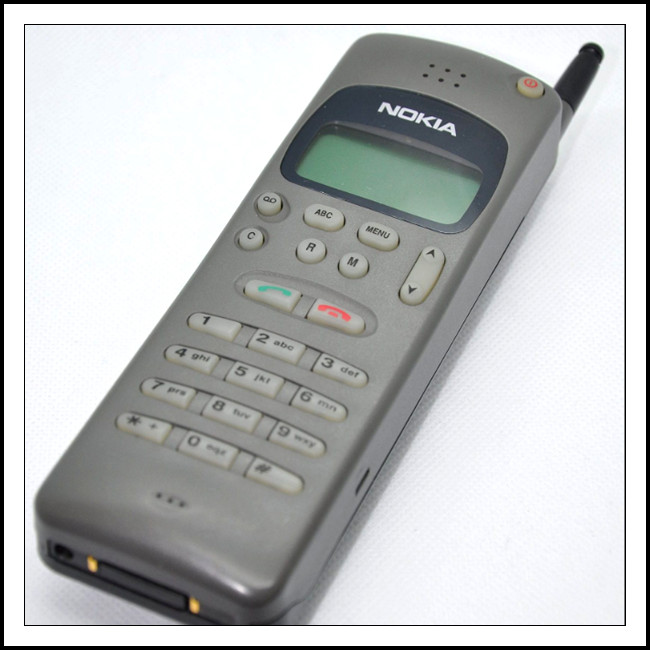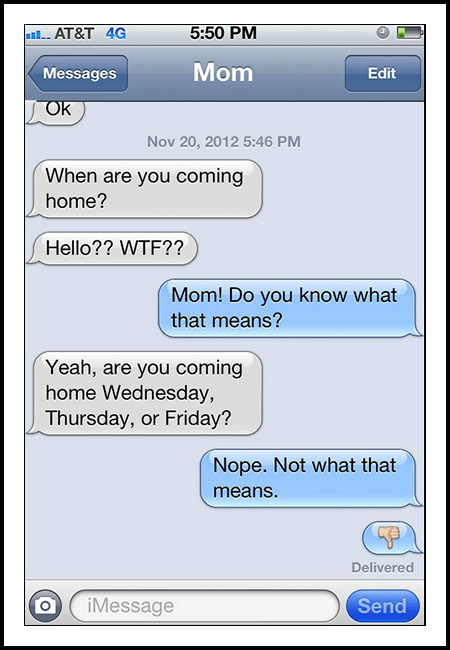FWIW JMO
Published:
BTW, ATEOTD IU2U
Right now, somewhere in the world, a TV channel is showing a re-run of Friends. I watched the series upon its first UK airing and have subsequently seen more than my fair share of the show’s repeats. Today the show’s entertainment value is with interesting language plays. Therefore, I give you some opening dialogue for the last episode of season 3: ‘The One at the Beach’. It was first broadcast on 15th May 1997:
Phoebe: Hey, you guys! Look what I found! Look at this! (She hands Chandler a picture.) That’s my Mom’s writing! Look.
Chandler: (Reading the back of the picture.) Me and Frank and Phoebe, Graduation 1965.
Phoebe: Y’know what that means?
Joey: That you’re actually 50?
Phoebe: No-no, that’s not, that’s not me Phoebe, that’s her pal Phoebe. According to her high school yearbook, they were like BFF. (Ross and Bonnie look at Phoebe quizzically.) Best Friends Forever.
All: Oh!
Rachel: That is so cool.
Phoebe: I know! So this woman probably could like have all kinds of stories about my parents, and she might even know like where my Dad is. So I looked her up, and she lives out by the beach. So maybe this weekend we could go to the beach?
All: Yeah! Yeah, we can!
What jumps out is the BFF reference. Was this the first time that BFF was ever used? It got me thinking.
That thought was promptly curtailed courtesy of the Google ngram. BFF has been bubbling away well before the middle of 1997, albeit on a very low flame. The Oxford English Dictionary has a documented first use from an Albuquerque Tribune news article of 1978. So perhaps Phoebe was the first mainstream media star user of BFF. It took Paris Hilton (remember her?) another ten years before she had her own show with BFF in the title. So from obscurity to today’s prevalence of using shorthand for everything - OMG LOL TMI so IDGI - what was the catalyst?
I grew up without the aid of modern telegraphic technologies. In my early teens my parents first had a phone in the house (through choice, not that it hadn’t been invented - how old do you think I am?). Casting my mind back to that period of my life in search of acronyms has proven to be a barren experience. The best I could recollect was SWALK (sealed with a loving kiss and not the early 1980s TV show), PTO, PS, and NASA. Only half of that list are pure acronyms. An acronym being:
A word based upon a series of first letters from a longer phrase or name.
It derives from a pair of Greek words: akros meaning extreme, topmost and onym meaning name. There are plenty of these ‘nym’ ending words in the English language which further classify nouns (and you thought that ended at uncountable nouns?)
Pronounce the letters as a word for a pure acronym:
NASA, NATO, scuba
Widen the definition of acronym to include any series of letters pronounced either as a single word or individual letters, then the list includes many, many more:
BBC, ITV, USA, MD
Nothing really strange about acronyms other than capital letters replacing the relevant words. But what about scuba I hear you ask? Scuba, laser and radar are no longer capitalised acronyms as they are regular words for the tangible objects the acronyms first represented. I would hazard that most acronyms represent intangible objects and thus remain capitalised. For those acronyms that include ‘filler’ words (to make the acronym longer and/or easier to pronounce as a full word), that filler word is (usually) represented in lower case. For example, what’s the ‘f’ in TfL?1 You can create acronyms on the fly (CAF). Remember to define what the acronym stands for either directly after use (as per the prior sentence) or within an appendix (or footnoted) if there are TMA2 used within a document - either well known or CAFs. Yes, you can make them plural too.
The final grammar point of note is the correct choice of indefinite article. MD is an acronym for a medical doctor or a managing director. Either meaning the indefinite article MD takes is ‘an’. Words with vowel sounding first syllables needing an indefinite article take ‘an’ otherwise it’s ‘a’. MD has the vowel sounding ‘em’ first syllable. An acronym never takes the indefinite article which would precede the full phrase (though many end up being the same indefinite article):
A managing director can sign this document. When you ask an MD to sign the document, make sure they initial each page too.
On a Thursday in early December 1992, Neil Papworth sent the first SMS message. That previous sentence was noteworthy for its correct acronym usage. It’s an SMS message and not an SMS - SMS stands for Short Message Service. So it’s the service through which the exchange of electronic messages occurs. It’s not the message itself!
Furthermore, take care with the word used immediately after the acronym - it may lead to duplication. An acronym which consistently seems to provoke this is PIN:

PIN is a Personal Identification Number. So, Barclays, when you write3 ‘… never have to give you PIN number’ you make two errors:
- ’give you’ should be ‘give your’
- ’PIN number’ in full is Personal Identification Number number. One too many numbers.
In Barclays’ defence, a click through to the full answer of that FAQ reads perfectly well. PIN number, similar to SMS, has become so accepted that I’m very much in the minority and need to get over it. However, feel free to join me in the GIAPoW (grammatically incorrect acronym pronunciation or writing) section of the grammar police. IKR, OTT.
The very first SMS message, ‘Merry Christmas’, was sent from a computer to an Orbitel TPU 901. The Orbitel was a mobile handset though not exactly back-pocket size:

Work on developing SMS started in 1984. German engineer Friedhelm Hillebrand and his French colleague Bernard Ghillebaert were looking at ways to allow message exchange using existing phone networks. Through limitations at that time, this set a maximum message length of 160 characters. Hillebrand analysed sentence lengths and identified that most were less than 160 characters, so that limitation would not be a limitation, unless of course he wanted to send this sentence which is 222 characters in length. Finnish engineer Matti Makkonen further developed on this initial work, and through his employer, Nokia, released the first SMS message friendly mobile phone in 1994: the Nokia 2100.

With a limit on message lengths, mobile phone users started to create shorthand. However, new technology typically arrives with a high cost of entry and the initial use of SMS messaging was low. In the UK, the number of SMS messages sent per customer in 1995 was just two every five months. Technology costs fell, as did barriers in exchanging SMS messages between different network operators during 1999, and by the turn of the new century, the number of SMS messages sent by UK customers had jumped to 35 per month. On Christmas Day 2006, UK mobile phone users sent over 205 million “Merry Christmas” SMS messages.
With this rapid uptake of SMS message use and the still 160 character limit, more and more txt spk was used, including BFF. Whilst in 1997 Phoebe prevented a further fall in BFF usage, she did not single-handedly kick-start its early 2000s trajectory. BFF usage took off from 2002/03, clearing the tower by 2006, and reached the moon soon afterwards. Perhaps Phoebe can take some credit for that launch, but the work of our German, French and Finnish engineers, combined with the limitations in character number availability they enforced, certainly pushed it much further into everyday language through the use of SMS messages.
Similar to when the internet was young, SMS messages created their own lexicon. The internet had spam, SMS messages had LOL. The internet had trolls, SMS messages had BYOB. SMS messaging was more creative than sitting at your desk with a full keyboard in front of you, and little to limit the number of characters you used. The internet created new definitions rather than extra words. Sure, chat-rooms were a hotbed of shorthand (and much else), but that was more an inability to touch type at conversational speeds. Mobile phones remained cumbersome to use for typing messages until the introduction of smart phones. Even then, with screens able to project keyboards, a cocktail of laziness, tradition and mystique kept the use of acronyms partying along.

Corporations, never ones for not missing a party bandwagon, jumped with gusto on to the acronym ride. They pushed their use as being ‘trendy’ and ‘in keeping with the youth culture we hold so dear’. I say it was further opportunity to cloud their industries in even more secrecy. Only the companies knew exactly what the acronyms they made up truly meant and hid their meanings in pages of small print appendices that no one (apart from analysts paid to do so) read.
This is not new. Professions have for many, many years been using language in code. Not the codes and cyphers that the good people of Bletchley Park were breaking. Their codes were Cockney rhyming slang, butcher’s back slang and the slang of thieves. For centuries, coded language existed for one group of people to speak freely within that group, ensuring that outsiders did not understand. Today’s SMS messaging keeps that tradition alive within the various social groups that utilise messaging applications. Acronyms and shortened words not only free up character availability they’re quicker to key in. This ensures that only those that know the code can read what you write. OTOH, the 160 character limit has long gone with many messaging applications available now for smart phone users. Yet, acronyms remain.
IRL youngsters speak in smart phone acronym tinted language. IDC as long as I understand what is being communicated. It’s fun to guess. IAE, ISO answers is difficult BT for language changes, the youngsters typically lead the charge. So, asking what an acronym means? LOLZ. Better to save face as an oldie and live (and text) in ignorance. SMH, WTF right? Phoebe was the eldest of the Friends. She was the one who needed to explain to the younger members what BFF meant: BSAAW.
B4N, HAG1 and BCNU.
-
Transport for London ↩︎
-
Too Many Acronyms ↩︎
-
https://www.barclays.co.uk/help/results/?q=pin%20number&_charset_=UTF-8&offset=0&origin=help.barclays.co.uk&facets ↩︎